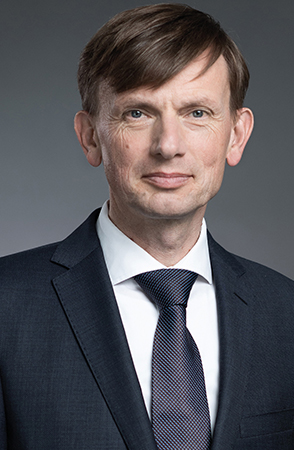Germany has made its long-awaited green sovereign bond debut with an innovative 'twin-bond' approach.
Since the first sovereign green bond was sold back in 2016, there has been speculation over when the German government would enter the fast-growing sustainable debt market. The eurozone’s benchmark issuer borrows circa $200bn each year and its development bank, KfW, is a sustainable finance pioneer. The government’s long-awaited green debut on September 2 did not disappoint. Its Finance Agency sold €6.5bn of 10-year notes with a 0% coupon, after accumulating €30bn of demand in less than two hours.
The timing seemed ideal. Markets had re-opened strongly after the summer recess and the recent federal budget included ambitious sustainable investments in line with the EU-wide commitment to climate neutrality by 2050. But the journey had started long before and the agency was focused on a much bigger goal. “Our intention is to build an entire curve of green German federal securities up to 30 years,” explains Tammo Diemer, member of the Finance Agency’s executive board. “This first transaction is the beginning.”
Twin bonds
Eighteen months earlier, the government had started designing its sustainable finance strategy, which included a clear goal of advancing green bonds’ development. This prompted the agency to speak with the full spectrum of players about how to tap the market. “For a transaction like this, it’s important to have that dialogue with a large number of participants to get a handle on what is needed and what should be avoided,” says Mr Diemer.
At the heart of the matter was how to leverage its status as Europe’s safest borrower. “The question for us was how we could best contribute to this segment with regards to our role as the euro reference rate,” he says. “This is realised via our innovative twin-bond concept.” This method means each green bond will have the same maturity and coupon as an earlier issued conventional bond. Crucially, the reference rate for the green notes is the trading price of the conventional twin.
The idea is to build a green curve that sits parallel to its conventional curve. In early November, the agency sold its second green bond (a five-year deal) and is now planning a 30-year deal in 2021, following which it will populate the intervening maturities by issuing two or three times a year. While the primary objective is to create a reliable benchmark rate, Mr Diemer notes that trading-oriented investors may find it interesting to trade the spread between the twin securities, adding another dimension to the market’s development.
Ensuring liquidity
A vital aspect of the twin-bond concept sees the government retain a portion of each green issuance, plus tap and retain an equal amount of the conventional twin. The agency has always been an active secondary market player in its conventional bonds and it has now extended that role to the green segment. This allows it to guarantee market liquidity, with the goal of attracting new issuers. “It is important for the development of the market — and, most importantly, for the environment — that green bonds provide a more economical refinancing platform to issuers than conventional bonds,” says Mr Diemer.
It is important for the development of the market — and, most importantly, for the environment — that green bonds provide a more economical refinancing platform to issuers than conventional bonds
Switch trades, whereby a green note is bought or sold against the conventional twin, gives the agency extra firepower to ensure the green element always has a value. “It will develop its own price in the secondary market and, therefore, can outperform the conventional twin,” he explains. “However, if there is an oversupply of the green twin in the secondary market and the price is falling, our trading activities will make it highly unlikely that it will fall below the price of the conventional bond.” For investors, it means green German government bonds will always be at least as liquid as the conventional twin — in essence, they will be the most liquid bonds in the eurozone.
Promising start
After a protracted period of research and programme design, things moved swiftly once Germany’s green bond framework was published on Monday, August 24. Later that week the agency hosted a global investor call and one-on-one meetings, and, the following Monday, it mandated Barclays, Commerzbank, Crédit Agricole CIB, Deutsche Bank, JPMorgan and UniCredit as lead managers.
The deal launched Tuesday morning and was more than five-times oversubscribed, leading to a reoffer price slightly above its reference rate. “For the issuer it was an attractive price, coming in one basis point tighter than its conventional twin. And for the investors it was a success in that it outperformed the conventional twin,” Mr Diemer reflects.
The pricing made for a promising start to Germany’s green bond programme and its twin-bond concept. Another encouraging sign was the number of long-time investors in Germany’s conventional bonds that decided to buy green paper for the first time. “These investors had been a little hesitant to enter the green bond segment as they needed to be able to liquidate a position whenever necessary,” says Mr Diemer. “It was remarkable to see that a number of these players are now represented and well-allocated in the green bond book.”



